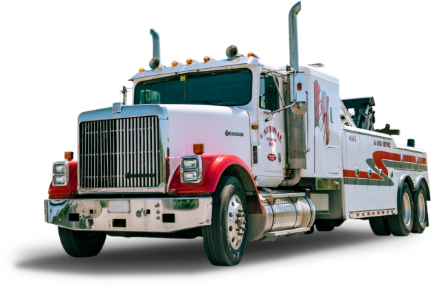You’re driving through the city, about to merge onto the highway. You press the gas pedal, expecting a smooth acceleration as your car shifts gears — but instead, the engine revs loudly while the car barely picks up speed. Or maybe the opposite happens: you try to downshift, and the transmission jerks so hard it feels like the car’s about to fall apart.
If this has happened to you, you’re not alone. Thousands of Canadian drivers deal with shifting problems every year, and many don’t realize just how dangerous ignoring these symptoms can be. A vehicle that struggles to shift gears isn’t just an inconvenience — it’s a serious safety risk. Left unchecked, transmission failure can leave you stranded, facing costly repairs or even putting you in danger on the road.
In this article, I’ll break down exactly why your car won’t shift gears properly, what signs you need to watch out for, and what actions you should take to protect both your vehicle and your safety. I’ll also explain when it’s safe to keep driving and when you should immediately call for a tow. As a towing specialist who has seen every kind of breakdown imaginable, I promise: the sooner you address gear-shifting issues, the more money and stress you’ll save.
1. Understanding How Your Transmission Works
Before diving into the problems, let’s talk about how your transmission is supposed to work. Whether you drive an automatic or manual, the transmission is what allows your engine’s power to transfer to the wheels at the right speeds. In an automatic car, gear shifts happen seamlessly without driver input. In a manual, you control it with the clutch and gear stick.
When this system runs smoothly, you barely notice gear changes. But the moment something starts slipping, sticking, or jerking, it’s a sign that the complex system of gears, sensors, and fluid inside your transmission isn’t working as it should. Transmission problems never fix themselves. In fact, driving with transmission issues can cause severe damage, turning what could be a minor fix into a major mechanical failure.
2. The Most Common Causes of Gear Shifting Problems
One of the most common reasons for shifting trouble is low or dirty transmission fluid. Over time, fluid breaks down and loses its ability to lubricate and cool the transmission’s internal parts. Without proper lubrication, friction builds up, causing the transmission to slip between gears or shift erratically.
Another frequent culprit is a faulty transmission control module or failing sensors. Modern cars rely on electronics to determine when and how to shift. When these sensors misfire or fail completely, the car becomes confused — resulting in delayed shifts, jerking, or the inability to change gears at all.
In some cases, mechanical wear and tear inside the transmission, such as worn clutch packs (in automatics) or failing synchros (in manuals), are the root cause. If you’re driving a manual transmission vehicle and feel grinding when shifting, this could indicate worn synchros, which means you need immediate attention from a mechanic.
3. Warning Signs You Should Never Ignore
While it might be tempting to “just drive carefully” when shifting problems first show up, the reality is that ignoring early symptoms can be costly. If your transmission is slipping — meaning the engine revs up, but the car doesn’t accelerate accordingly — that’s a red flag. It could lead to complete transmission failure at highway speeds, which is both dangerous and expensive.
Another telltale sign is delayed engagement. If you shift from park to drive and the car hesitates before moving, this signals internal wear or fluid problems. Jerking motions, grinding noises, or a burning smell coming from underneath the hood are also signs that the transmission is overheating or experiencing excessive friction. According to data from CAA, transmission failures are one of the top five reasons Canadians require a tow each year.
Don’t ignore dashboard warning lights either. If you see a check engine light or a transmission temperature light, it’s your vehicle’s way of telling you something is seriously wrong.
4. Can You Fix It Yourself, or Is It Time to Tow?
Sometimes, the solution is as simple as topping off transmission fluid — but that only works if the fluid level is low and there are no leaks. If the fluid is dirty or burnt (it should be bright red, not brown), you’ll need a professional fluid flush and inspection.
If your car is jerking, slipping, or refusing to shift, don’t risk driving it to the shop. I’ve seen too many people try to “just make it” to a mechanic, only to end up stranded on the side of the highway. In more serious cases, your car may go into “limp mode,” a safety feature that restricts speed to protect the engine and transmission. If that happens, do not force the car to continue — pull over safely and call for a tow immediately.
For manual transmissions, if you’re experiencing difficulty engaging gears or hear grinding noises, stop driving. You could be damaging the clutch or gearbox further with every mile. The same goes for burning smells or leaking fluid — both are urgent signs you need professional help.
5. What Happens If You Ignore the Problem?
The biggest mistake drivers make is assuming the problem will go away. In reality, transmission damage only gets worse over time. Small issues like fluid contamination can lead to overheating, which then causes parts inside the transmission to wear out faster. In worst-case scenarios, you could face complete transmission replacement, which can cost anywhere from $3,500 to $7,000 — and that’s if you catch it early.
I’ve towed countless vehicles where the driver kept pushing just a little farther, only to end up in dangerous situations. One driver in Mississauga ignored jerky shifting until the car stalled completely in the middle lane during rush hour. Not only did it require an emergency tow, but the stress and risk were completely avoidable.
In short, addressing shifting issues early on is the difference between a quick repair and an expensive nightmare.
Conclusion
If your car won’t shift gears properly, don’t wait for the situation to escalate. Attempting to drive on a failing transmission can lead to dangerous breakdowns, costly repairs, and potential accidents.
At Cardinal Towing, we’ve helped thousands of drivers in exactly your situation. Whether you’re dealing with slipping gears, stuck shifts, or grinding noises, our 24/7 towing service will get your vehicle safely to a trusted repair shop. We operate with speed, professionalism, and care — because we know that when your car isn’t shifting, every minute counts.
Don’t risk it. Call Cardinal Towing for fast, safe, and reliable towing today. Get a quote now and let us help you get back on the road — without the stress.



